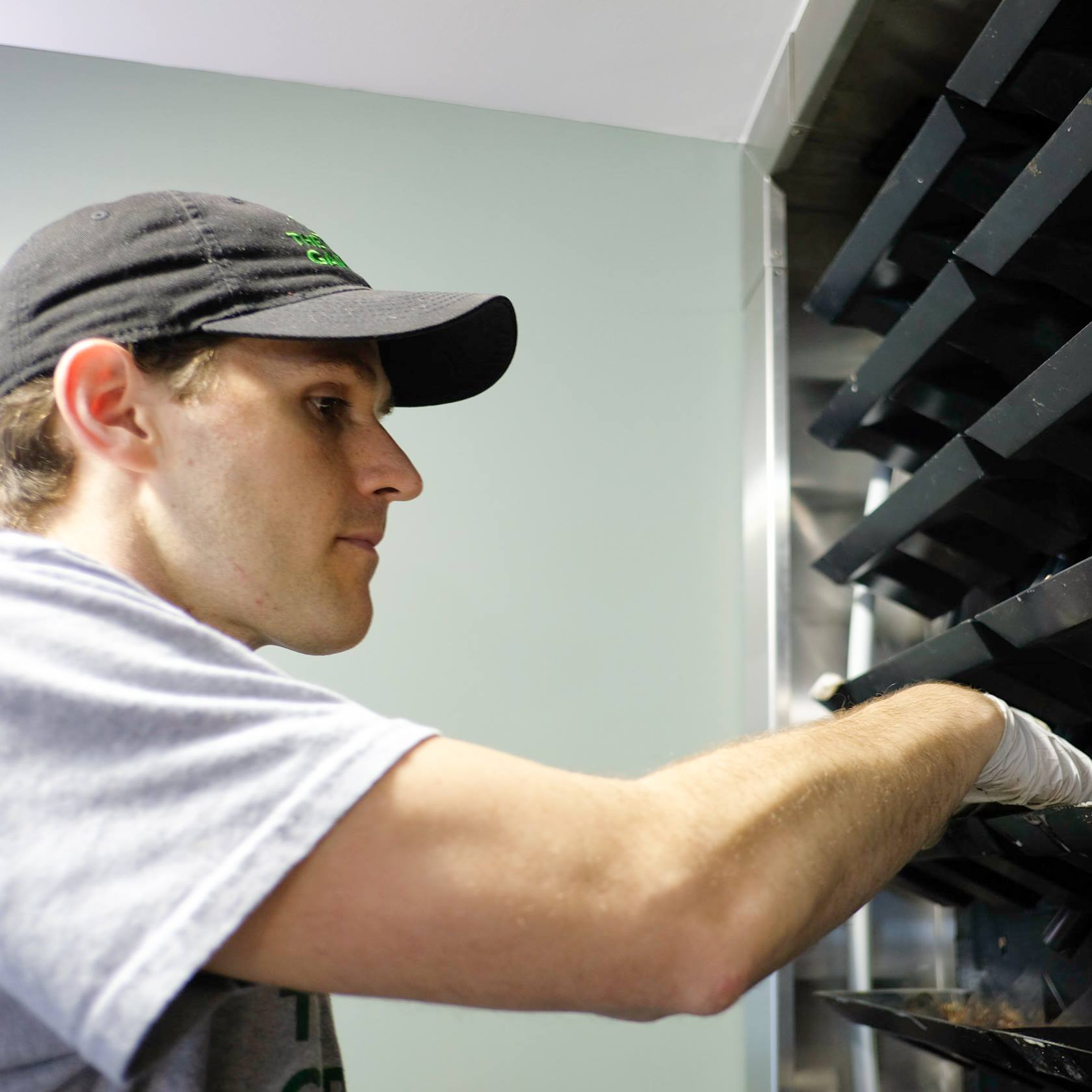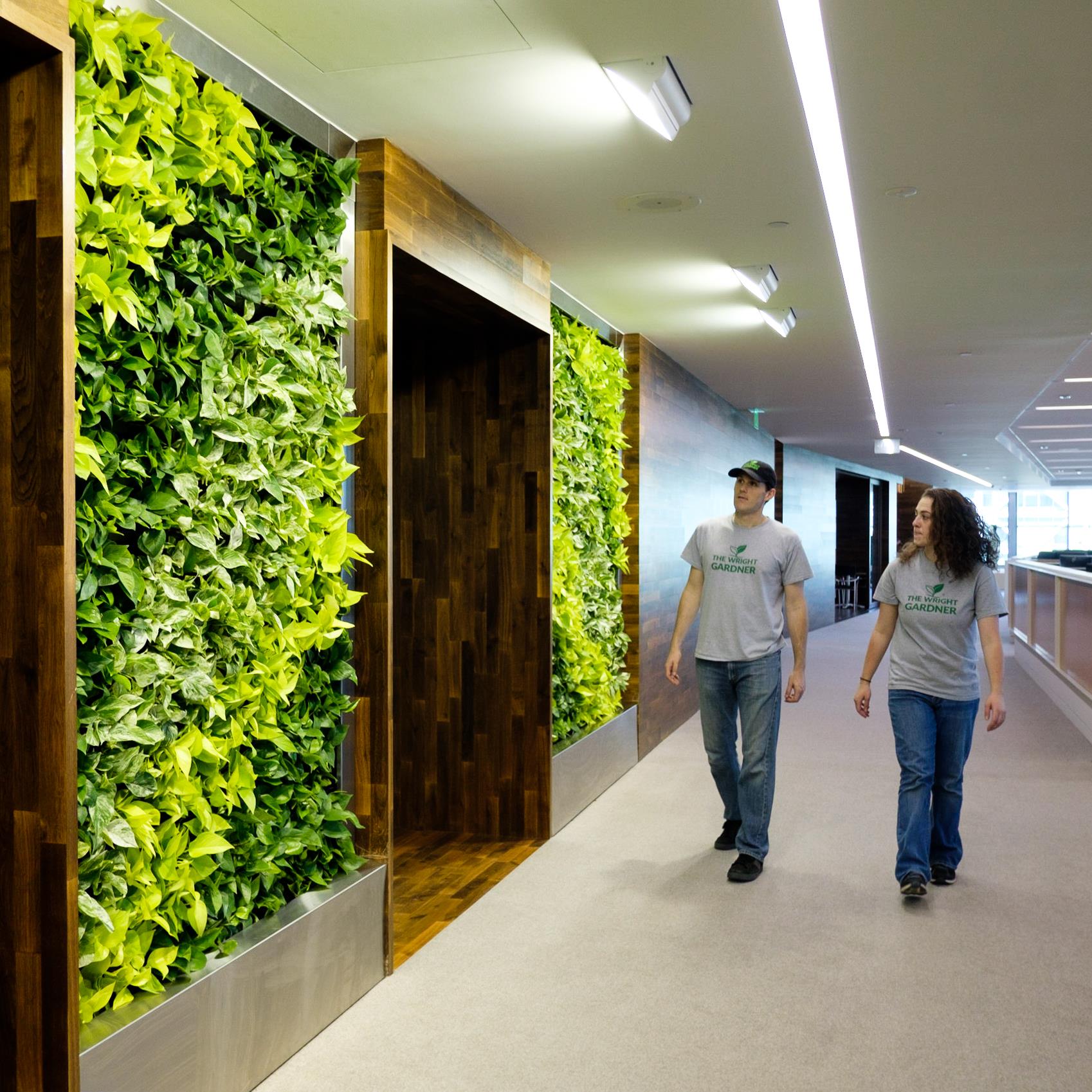REDESIGNING A PLANT SERVICES COMPANY FOR GROWTH

June 12, 2018
by a searcher from Northwestern University - Kellogg School of Management in Los Gatos, CA, USA
 SEARCHFUNDER INTERVIEW OF NICK HASCHKA, PART I
SEARCHFUNDER INTERVIEW OF NICK HASCHKA, PART I
We spoke to Nick Haschka of Wright Gardner plant services about 1 year into his operator role about the search, the transition and plans for the future.
How did you get started in search?
My business partner and I were at a start-up that ran out of capital and liquidated. We were 'blue skying' investment ideas and what we wanted to do next with our lives. I originally was looking at real estate investment. Both of us had a variety of experiences: start-ups, small business, Fortune 500 companies, management consulting, investing, etc. Both of us have had meandering career paths.
As we were researching, yields were not looking good for real estate. Real estate tends to be more of a landing place for aspiring investors rather than a starting point due to the need for a lot of capital. As we started looking at opportunities, our research showed that returns on operating businesses looked far better. We talked to various people and groups about different investment models: micro private equity, search funds, independent sponsors, and solo investor/operators. We originally looked at sponsored deals in low to mid-market private equity, but were a bit discouraged by how much money was chasing how few deals, and how our day-to-day might be impacted by being slaves to the demands of external capital. The more we researched, the more we thought controlling our own destiny via a self-funded path was attractive.
So, we decided to fund our own search and acquisition, and developed our criteria based on that. Throughout our search, our criteria pretty much stayed the same. What changed was the number of targets, how we turned over the targets and the size range we were looking for.
It seemed like your search was relatively quick?
As we were looking, we stumbled upon this plant service company that had a great reputation. The fundamentals of the business looked attractive. It simultaneously met our business and personal objectives. On the business side, it’s an unsexy, service-oriented business with stable monthly revenues. On the personal side, neither of us wanted to work nights and weekends. We wanted to be in a business that, although unsexy, is something customers like and does not come with a lot of intense stress or liability. There are some uniquely attractive attributes of an office plant company. Most of the business is based on recurring monthly contracts. Technicians know their routes and do their service day-in, day-out. We get paid the same fee each month to provide that service. It’s a Monday through Friday, 9 to 5 business. There’s rarely weekend or after-hours activities, and there tends not to be operational emergencies. When plants die, they don’t die fast. For us, a dying plant is an emergency situation. In the grand scheme of things though, no one will be hurt or harmed by a dead plant. Most people like us and get us because they want our help to keep their workspace nice.
We looked at a handful of other opportunities. For example, we looked at a manufacturing plant and some machine shop type of businesses. This business resonated. It was local and close by where I lived. We liked the owner and trusted him. He had a great company and had been planning to sell. This was his planned retirement; he did not work beyond his retirement point. We saw a lot of situations where owners drove their companies into the ground by working beyond the point where they could keep the business alive and healthy. He didn’t do that. The company was healthy. It had grown every year with the exception for the dot com bust. Even in the down years, they continued to remain flat or grow a tiny bit. It was a really great story. A founder who had been running it for 30 years. He decided to call it quits and prioritize his time elsewhere. He was on the hunt for his successor who would take good care of his people, his customers and his vendors.
How did you find this dream company?
We found it listed on BizBuySell.
Some searchers are reluctant to use business listing services for fear the companies will be picked over?
That just wasn’t the case for us. We have since done two add-ons, neither of which were for sale companies. They were both direct competitors. We’ve gotten those opportunities through the grapevine. Our founder knows most of the owners in the local area. He had a really good experience working with us and wholeheartedly and genuinely recommends us to people. So, we’ve gotten some activity that way.
Was the owner’s desire to ensure his people were taken care of a selling factor for getting the deal done.
Yes. There was another buyer who he didn’t click with. I believe the other buyer was a higher bidder that was operating in the plant space. We got the deal because our intentions were pure, and aligned well with his ideal exit to retirement.
 Do either of you have a green thumb by any chance?
Do either of you have a green thumb by any chance?
No, not at all. (chuckles). My plant care activities have been pretty minimal. I have learned some of the horticulture, but have not actually learned the skill of plant care. Almost none the owners in our space are doing plant care anymore. Most work in a design and customer service capacity - selling and installing plants, while the technicians are doing the service. I have staff doing the design and sales. I am focused on operational processes, institutionalization, repeatability, scalability and M&A strategy, etc.
Any pleasant or not-so pleasant surprises when you started running the company?
Let’s start with the pleasant surprises. A pleasant surprise was that the staff was a lot more ready, willing and able to accept the change than we anticipated. We had pretty low expectations about how people were going to take to us. As a result of that, we managed it very cautiously in terms of messaging and communications. I was surprised and happy at how much we were welcomed into the family.
The level of professionalism and competence of the company was very high. I was -- and continue to be -- impressed by the people who run the day-to-day. It makes a huge difference. As an operating owner, I feel things wouldn’t fall apart if I stopped showing up. I add value; I inject energy and growth. But, if I didn’t show up, the business would do what it always does. It’s really relieving. That’s not always the case for businesses at the small size we acquired.
The unpleasant part was not that much of a surprise. The profitability performance of the company was about what we expected. I don’t think I had an appreciation for how much you really need to manage the P&L. Even with the recurring revenue, each month there are things that need to be done to eke out profits. I feel like every single month I am pulling a rabbit out of my hat to hit a number. So far, that’s worked out just fine. I had under-appreciated what being an operator is. I didn’t fully understand enough about what swings a P&L – what makes the difference between a crappy month versus a normal month versus a great month. Now we’ve gained some appreciation of that. We know to pay attention to it in terms of keeping a good bullpen of deals and ideas to hit or beat the targets.
 Are you talking about growing sales?
Are you talking about growing sales?
Overall, yes, but we are most focused on the bottom line profit numbers. Because we are in a maintenance business, we have a stable base of revenue, and with that, a base level of maintenance-derived profits. So far, we’ve only seen one case of monthly contraction. Beyond that base, our bottom-line profit performance swings with whatever rabbits we pull out each month in terms of what jobs we landed. We are now built to grow much faster. The business had been run to deliver near term cash flow to the owner for years and years. We redesigned it to be a business that was designed to grow. I didn’t appreciate how much capital growth consumes. We've been constantly reinvesting, soaking up profits that is coming back in pursuit of growth. It’s really hard to have both. I think I did not appreciate how hard it is to grow profitability.
How do you market to potential customers?
That’s one area we’ve spent a lot of time building. We more or less had been an old-line plant company that speaks to the old-line office manager. Not to inject an ageism into it, but there’s a real difference between the office manager who has been the office manager for 30 years and the officer manager who is young and likely to get promoted into a different role. We, as an organization, didn’t touch the latter customer prior to our purchase, which particularly in San Francisco represents a vibrant base of young and fast growing companies. It’s a segment of the market that we didn’t speak to. We have built a lot of capacity to serve that customer, while continuing to serve the customer base that we had prior. We have acquired other client books in similar transactions to the original asset purchase.
 We are growing by acquisitions and organically. Within organic, there’s growing your customer count (through social media, our website and being known and referred). The other is growing through share of wallet that you have through products (upgrades, plant care, plant or moss walls). We have added to our portfolio of what we do in service. We do interior and exterior. We do creative horticultural décor, such as you might find on Pinterest. That is a mode of upselling for us. The easiest and fastest way to grow is acquisition, but it is not a cheap way to grow. We are always looking at our leverage and our capitalization, preparing for cost effective acquisition opportunities that pop up.
We are growing by acquisitions and organically. Within organic, there’s growing your customer count (through social media, our website and being known and referred). The other is growing through share of wallet that you have through products (upgrades, plant care, plant or moss walls). We have added to our portfolio of what we do in service. We do interior and exterior. We do creative horticultural décor, such as you might find on Pinterest. That is a mode of upselling for us. The easiest and fastest way to grow is acquisition, but it is not a cheap way to grow. We are always looking at our leverage and our capitalization, preparing for cost effective acquisition opportunities that pop up.
Any other surprises or things you learned along the way?
I haven’t really worked in the business services economy. I have had to learn some things about HR, such as managing risk and developing our employment practices. I had always worked at organizations that were very highly paid and highly educated people. We’re not that. That comes with a certain reality. We are much more in line with the mainline economy. It was not familiar to me. I am adjusting and learning, trying to be relatable and connect with people who are outside of the circle that I am accustomed to.
Can you give me an example?
There weren’t any particular incidents. We had enough time to thinking about it pre-closing. We spent a lot of time thinking about change management and what we were going to get into. We had a long closing because we did an SBA loan. I also had a month with the owner after the close. He was running the company and I would shadow, which helped a lot. When he had personnel meetings, I would sit in on them. I would speak but it was his meeting to run. That was by design to reduce the shock of the transition.
How long did the owner stay on?
He stayed on full time for 3 weeks. He spent a week away, which forced me to step in. Then, he came back half time for another couple of weeks. After that, he wasn’t in the office any longer. The total period was less than 2 months.
The core of this business is very simple, which is something we really liked about it. As long as your people know how to take care of the plants, you need to coordinate, make sure everyone can show up, dedicate enough time, do the service, make sure things look good and handle the customer service. If you do those things, you will keep your customers.
While that may sound short, it takes work. I had a session with the owner learning all the vendors, customers and the plants. It’s really hard to run a plant company if you don’t know the names of the plants. That’s all rote. It’s amazing how fast you can become fluent in the language when you are immersed in it.
from Northwestern University in Los Gatos, CA, USA
from Massachusetts Institute of Technology in Apex, NC, USA